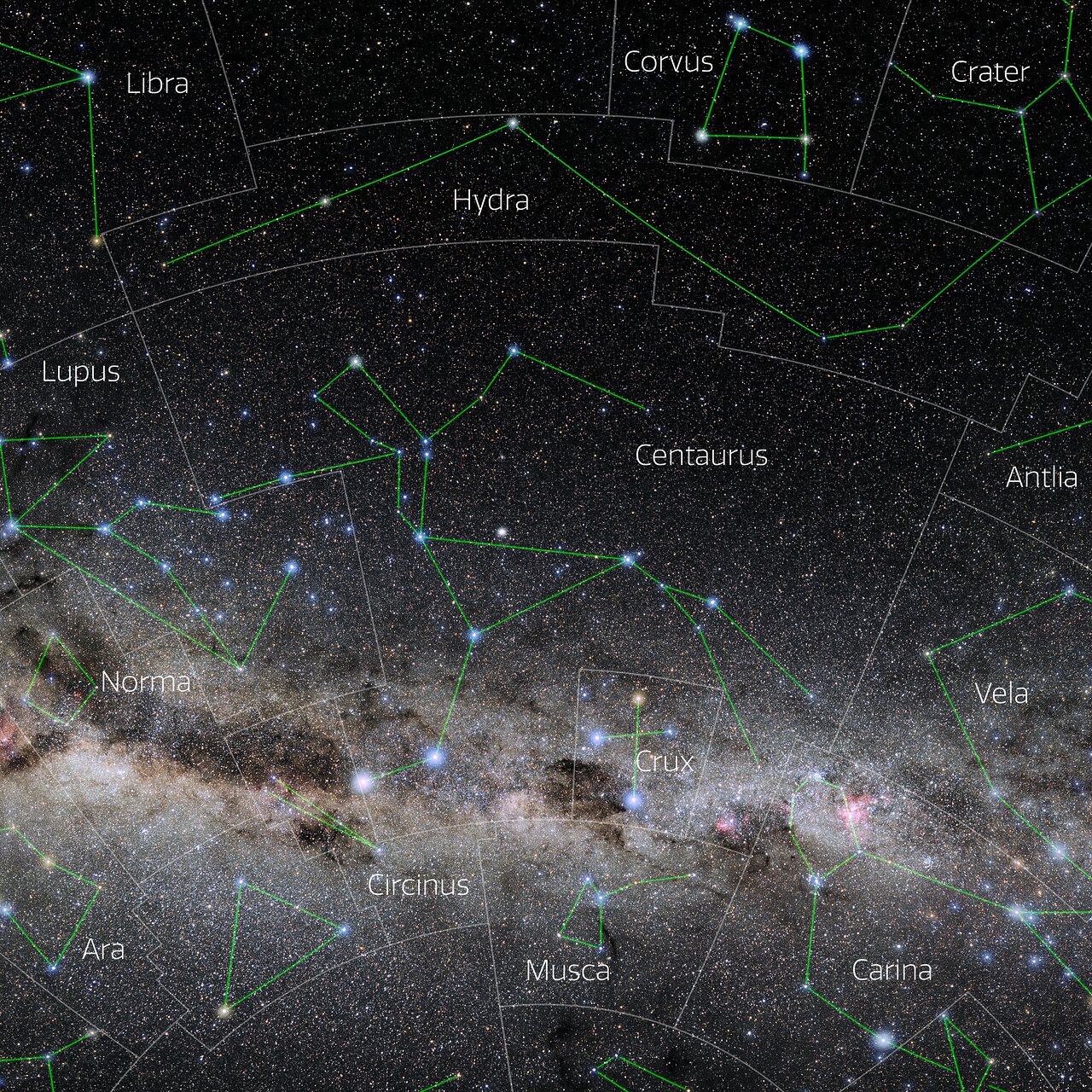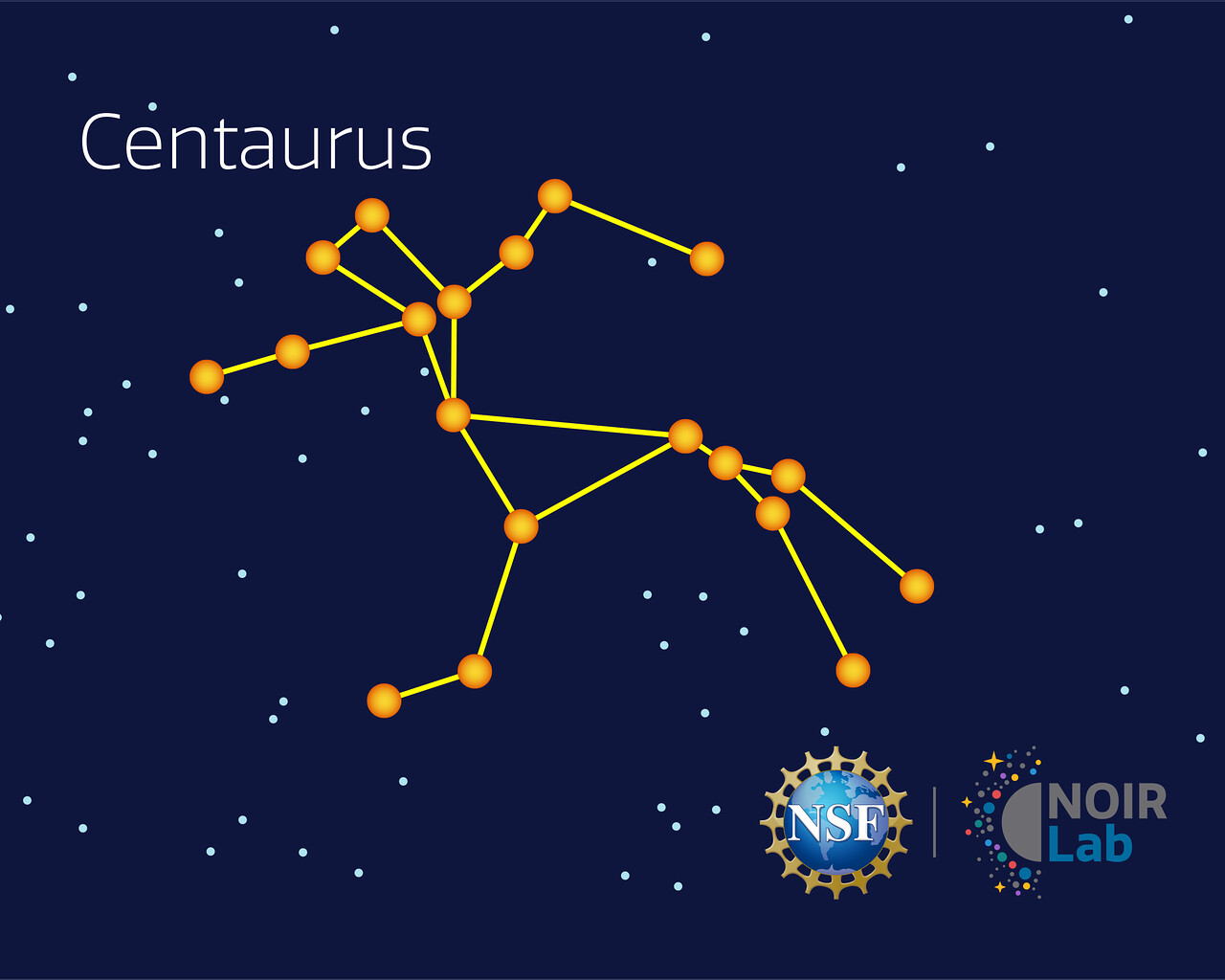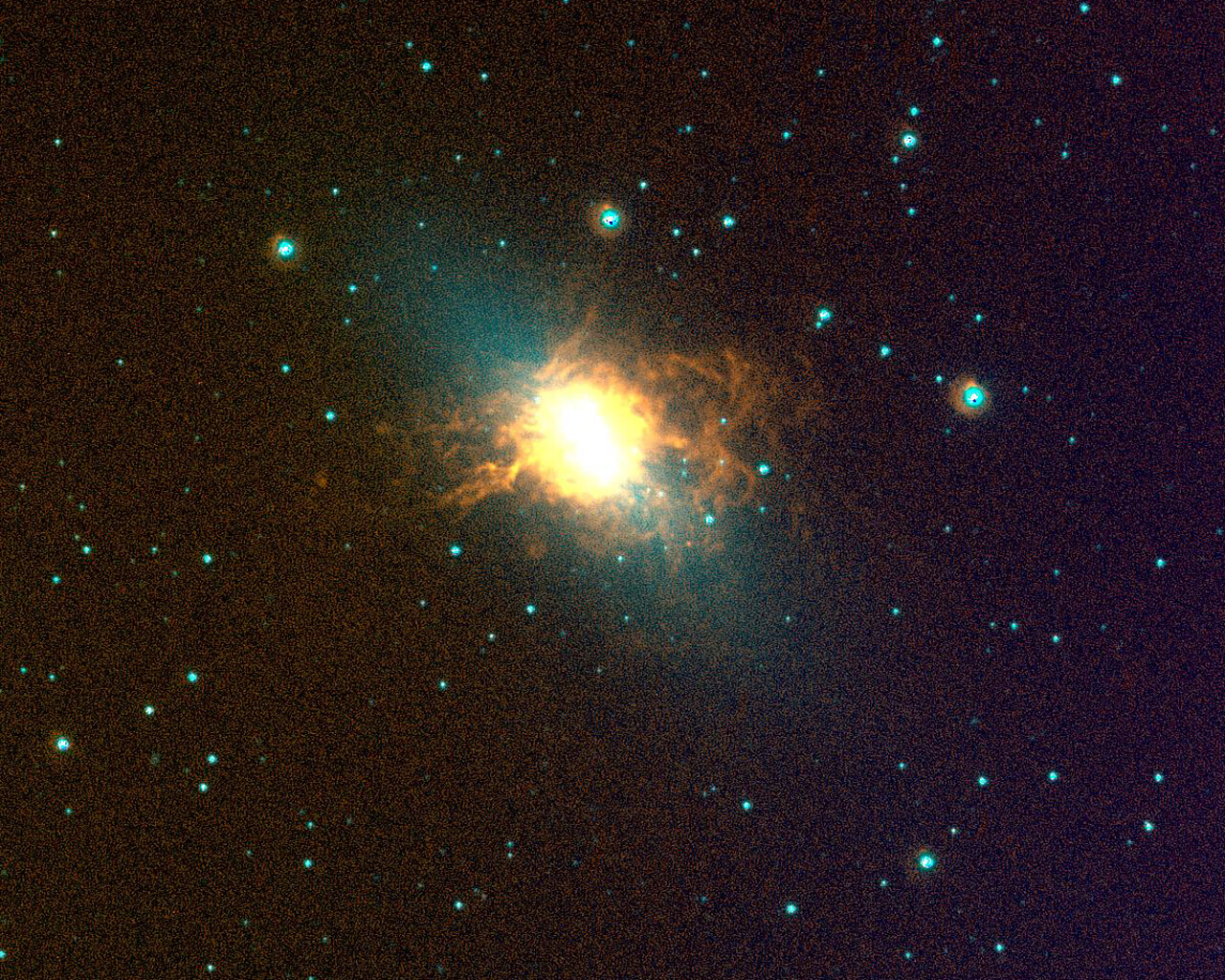Centaurus
Origin
Centaurus is a large constellation in the southern sky that was cataloged by the second-century astronomer Ptolemy. Centaurus represents a mythical creature that is half human and half horse — The Centaur. The northern part of Centaurus can be seen low in the south from mid-northern latitudes but is better seen from the southern hemisphere.
Bright Stars
Centaurus has a large number of bright stars. Alpha Centauri is one of the most famous stars in the night sky. It is a triple star system composed of a binary pair, which is in turn orbited by the third star, Proxima Centauri. The system has a combined magnitude of –0.28 and is located 4.4 light-years from Earth. Proxima is the closest star to Earth but it is a faint red dwarf that shines at 11th magnitude and is not visible to the naked eye.
Beta Centauri is also bright, at magnitude 0.6, and close to Earth at a distance of about 400 light-years. Beta Centauri is also a double star that is difficult to separate in small telescopes owing to the small angular distance between the stars.
Another bright star, Menkent, is an orange giant star of magnitude 2.06. It is the only bright star in Centaurus that is easily visible from mid-northern latitudes.
Gamma Centauri is a binary star with a visual magnitude of 2.2. The two stars are near twins as they are both blue-white stars of magnitude 2.9.


 Photo of the constellation Centaurus produced by NOIRLab in collaboration with Eckhard Slawik, a German astrophotographer.
The annotations are from a standardized set of 88 western IAU constellations and stick figures from Sky & Telescope. Please find here a non-annotated version of the image.
Photo of the constellation Centaurus produced by NOIRLab in collaboration with Eckhard Slawik, a German astrophotographer.
The annotations are from a standardized set of 88 western IAU constellations and stick figures from Sky & Telescope. Please find here a non-annotated version of the image.
Credit: E. Slawik/NOIRLab/NSF/AURA/M. Zamani
Notable Objects
Omega Centauri (NGC 5139) is the largest and most luminous globular cluster in the Milky Way. It shines at a magnitude of 3.7 making it easily visible to the naked eye. Omega Cen is 17,000 light-years away and contains several million stars.
NGC 3766 is an open cluster visible to the naked eye. It is about 6300 light-years from Earth and contains approximately 100 stars.
Centaurus A (NGC 5128) is an active galaxy with a massive black hole consuming material. Photographs reveal intricate dust lanes as well. At magnitude 6.94, Centaurus A is visible through binoculars and small telescopes.

















